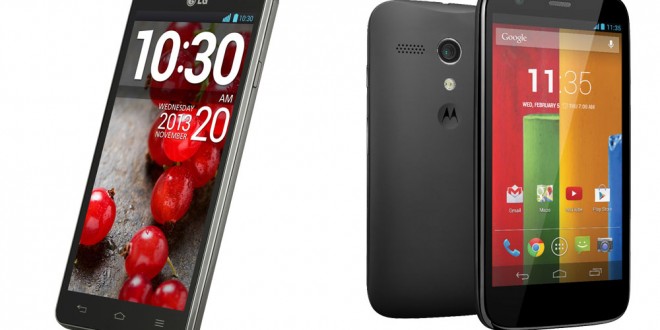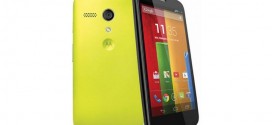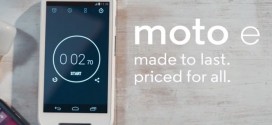The LG Optimus L9 2 uses a dual-core 1.4 GHz Krait CPU, and an Adreno 305 GPU. It also has 8 GB of internal storage, with the same 32 GB microSD support. It also comes with 1 GB of RAM. Simply put, the L9 II is faster, despite being older. However, we must consider that the price of the L9 II has dropped significantly as of late (being an older model and all), and that’s the only reason the two phones fall into the same price category. That being said, a winner is a winner, and the LG Optimus L9 II simply runs better in pretty much every aspect.
For testing with some games, we’ve opted for Stoic’s brilliant Banner Saga, which is a moderately demanding Android game (and a brilliant one, that you should definitely try out if you haven’t already). Both phones managed to play the game well enough, albeit loading times were at time iffy in both cases. In any case, both the Motorola Moto E and the LG Optimus L9 2 do a decent enough job for multimedia and gaming, just don’t expect them to run the latest hardware-intensive games flawlessly, they are cheap phones after all.
In terms of battery life, both phones rank similarly. Due to lower end hardware, power consumption isn’t that much of an issue. The LG Optimus L9 2 lasts a bit longer, but the difference isn’t really noticeable. With extended use, both phones will last through a regular day, and with more conservative use, you can probably go 36 hours and above before a recharge.
Camera, Price and Verdict

Time to touch upon the not-so-good aspects of both phones – the cameras. Not like we’ve had great expectations in this price range (we’ll get to that in just a sec), but neither the Motorola Moto E nor the LG Optimus L9 2 are impressive in terms of photographic capabilities. The former comes equipped with a 5 MP camera, capable of recording video at 480p and at 30 FPS. It’s pretty much as bad as it sounds – don’t expect to take breathtaking photos with the Moto E. It lacks a front-facing camera, so it’s not really selfie-friendly either. The latter is a bit better equipped, with a 8 MP main camera equipped with LED flash, autofocus and face detection. It’s certainly better, but it’s still not impressive. Granted, if you really need to capture a moment, it will do its job adequately, but it doesn’t come close to the superior cameras in more expensive smartphones. The camera also records 1080p videos at 30 FPS, but they’re not extremely smooth. The L9 II does however come with a front-facing 1.3 MP camera too though, which does take noisy, but acceptable pictures. Just don’t attempt low-light selfies – it’s a no-go.
And now we’ve gotten to the gist of the matter, which is the price. If you haven’t been impressed with either of these phones yet, let’s discuss pricing. The LG Optimus L9 II was initially launched as a mid-range smartphone back in 2013, but things have changed since, in the sense that the phone’s original mediocre price has dropped – a LOT. It’s not worthy of being called a budget smartphone, yet retains all of that medium-range juice. It can be picked up for around $149, and with some great deals on Amazon or Ebay, even less. The only problem with it is availability, as it can be a bit tricky to find one with most US carriers. Still, if you can get your hands on one, it’s a bargain. The Motorola Moto E is also extremely cheap, with a price-tag of around $109.99. It’s an extremely popular budget model, so it’s more easily available, and you’re likely to find an even better deal for it, especially now that the holidays are over and retailers will go the extra mile to get things off the shelves.
As for which one you should pick, there are a couple things worth mentioning. The L9 II is the superior phone in almost all aspects, but costs a tad more and is hard to get. It also won’t ever get Android Lollipop, so if that’s important to you, you should opt for the Motorola Moto E. The latter is cheaper and a bit weaker in most aspects, but still performs admirably for a budget phone, and has everything a basic user could hope for. Due to Motorola’s raw approach to Android, it’s also surprisingly lag-free, something guaranteed by the limited bloatware and the simple UI. If you can however go the extra mile, the LG Optimus L9 2 is an exceptional choice for what it costs nowadays, is a looker and runs surprisingly fast. You can’t go wrong with either, but the Optimus would be our first recommendation.
LG Optimus L9 II (D605)
Size: 128.4 x 66.5 x 9 mm, 120 g
Display: 720 x 1280 pixels, 4.7 inches (~312 ppi pixel density), True HD-IPS LCD
CPU: Dual-core 1.4 GHz Krait, Qualcomm MSM8230 Snapdragon 400
GPU: Adreno 305
Storage: 8 GB internal, up to 32 GB microSD, 1 GB of RAM
Software: Android KitKat 4.4.2
Camera: 8 MP, 3265×2448 pixels, autofocus, LED flash, face detection, touch focus, 1080p video recording at 30 FPS
Front Camera: 1.3 MP
Price: ~$149
Motorola Moto E
Size: 124.8 x 64.8 x 12.3 mm, 142 g
Display: 540 x 960 pixels, 4.3 inches (~256 ppi pixel density)
CPU: Qualcomm Snapdragon 200, Dual-core 1.2 GHz Cortex-A7
GPU: Adreno 302
Storage: 4 GB, 1 GB RAM, up to 32 GB microSD
Software: Android KitKat 4.4.4, planned Android 5.0 Lollipop upgrade
Camera: 5 MP, 2592 х 1944 pixels
Front Camera: None
Price: ~$109
 Load the Game Video Games, Reviews, Game News, Game Reviews & Game Video Trailers
Load the Game Video Games, Reviews, Game News, Game Reviews & Game Video Trailers



